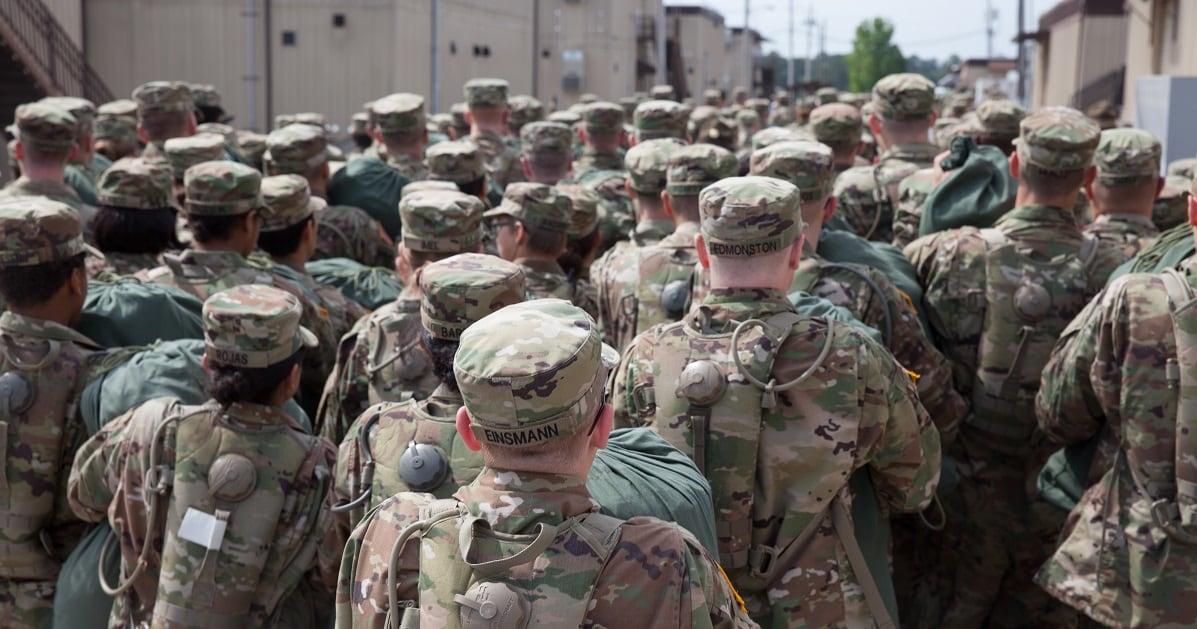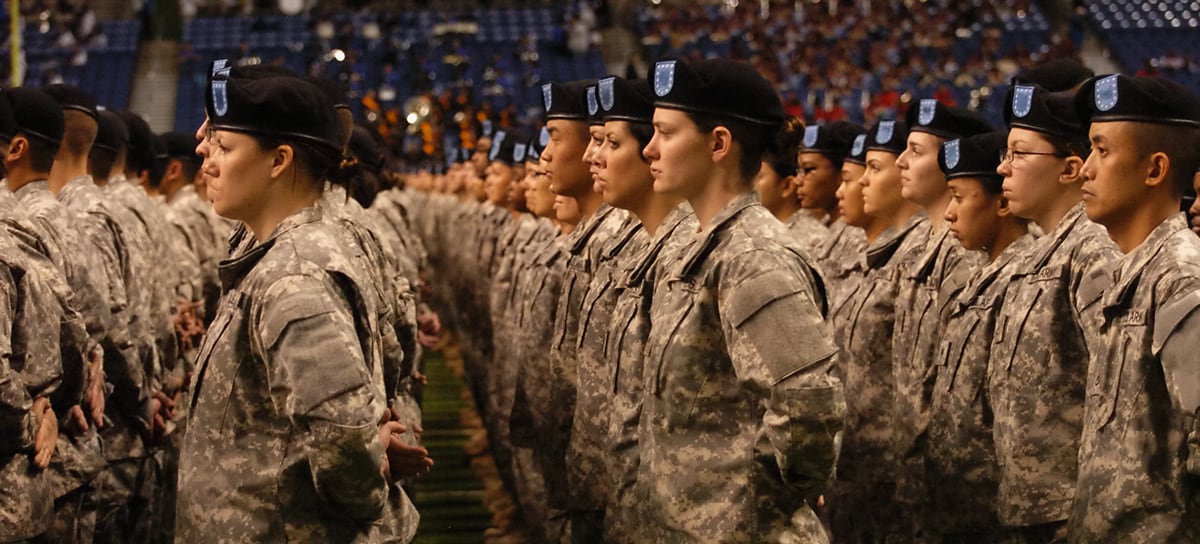The U.S. military is beginning to experience a manpower crisis and a steady erosion of its ability to secure the nation.
The Army is struggling to meet its recruiting goals as it seeks to expand in a difficult recruiting environment with 3.9 percent civilian unemployment and a declining propensity among America’s youth to serve in the armed forces.
The military competes for talent with colleges, trade schools and civilian employers. Each year, some 4 million Americans turn 18 years of age; just 29 percent can meet the minimum enlistment requirements. Of the approximately 34 million Americans 17 to 24 years of age, some 24 million are ineligible.
Sheer eligibility is one factor, another is willingness — or propensity — to serve. The propensity to serve is about 15 percent, or 1 million 18-year-olds who are able, but unwilling, to serve in our all-volunteer force.

Aptitude is another key factor. The Department of Defense Armed Services Vocational Aptitude Battery identifies an individual’s knowledge and ability to perform jobs in the military. The ASVAB groups testing results into categories I to V. The services prefer to recruit from Category I-III, but will recruit from Category IV when they must.
The Army is authorized to enlist up to 4 percent of its recruits each year as Category IVs, people who scored between the 10th and 31st percentile on the pre-enlistment aptitude test. Last year, the Army enlisted 63,000 new recruits; 1.9 percent (more than 1,000) were Category IV. “The Army anticipates problems meeting its 2018 goal to enlist 80,000 qualified volunteers, even with increased bonuses and incentives,” according to a February 2018 Politico story.
In fact, the Army is offering $40,000 enlistment bonuses and paid $424 million in enlistment bonuses last year. The Army is also trying to meet its goal by granting “moral waivers” for criminal offenses from drug convictions to arson.
RELATED

If recruiting goals remain at approximately 80,000 per year for the next three years and the Army exercises the 4 percent Category IV “standard,” in three years (a normal initial enlistment period) we might anticipate an Army with 10,000 Category IV soldiers — a more expensive, less effective Army.
Category IV soldiers present several problems. They are less likely to complete their initial training or their initial term of enlistment. They are harder to train due to lower cognitive skills and literacy. They are less effective. A 2005 Rand study reported that a Category IIIA tank gunner (scoring in the 50th to 64th percentile on the aptitude test) had a 34 percent greater chance of hitting the target than a Category IV tank gunner.
The same study noted that a three-person communication team of Category IIIB soldiers (scoring between the 31st and 49th percentile on the aptitude test) had a 47 percent chance of making communications systems operational while a team of Category IV soldiers had a 29 percent chance of success.
These soldiers misbehave: According to a 2013 study, “The Association Between U.S. Army Enlistment Waivers and Subsequent Behavioral and Social Health Outcomes and Attrition from Service,” of the recruits who joined the Army from 2003 to 2008, 1,921 were granted waivers, including for felonies. Those granted waivers were “significantly more likely to subsequently be screened at ASAP [Army Substance Abuse Program], test positive for an illicit substance, or separate from the Army for misconduct behavior.”
Finally, training and leading these Category IV soldiers is difficult and time consuming for our Army’s overburdened company grade officers and NCO corps.
Indeed, along with the issues that make recruiting a challenge, health issues — in particular obesity — spell trouble.
“The obesity issue is the most troubling because the trend is going in the wrong direction. We think by 2020 it could be as high as 50 percent, which means only 2 in 10 would qualify to join the Army,” said the commanding general of the Army’s Recruiting Command in 2015.
RELATED

Each year, the military must recruit about 150,000 enlistees. The 1973 introduction of the all-volunteer force eliminated the military’s most effective way of attaining a quality force of adequate size: conscription. A return to conscription would mitigate the need to compromise “standards”; in fact, the military could raise standards due to the enlarged pool of recruits.
Instead of facing the increasingly and painfully obvious, discussion among political and social elites focuses on helping otherwise ineligible youth become eligible. The hope is that we can increase the ineligible pool with youth programs. Maybe, and it’s certainly worth the effort, but another approach (given the unpalatability of conscription) may be to offer graduating students a preparatory program that increases their fitness and aptitude levels with some service obligation.
The compromising of “standards” is not necessarily the result of malice or incompetence on the part of decision makers. The descent may be explained by a pressure-induced organizational failure called the “normalization of deviance.”
Normalization of deviance is defined as “The gradual process through which unacceptable practices or standards become acceptable. As the deviant behavior is repeated without catastrophic results, it becomes the social norm of the organization.” The term was popularized by Diane Vaughan in her book, “The Challenger Launch Decision.” on the O-ring failure that led to the Challenger disaster. The potential effect of enlisting low-quality recruits is similarly disastrous.
If our national leaders and the American public ignore this normalization of deviance for political, personal or social reasons, it may fall on those of us who have served or are now serving to ask whether the quality of the force is being compromised and therefore less lethal and effective. What extra risk does that create for those who do “step up”?
Is an Army of compromised standards likely to win America’s wars?
Dennis Laich retired from the U.S. Army as a major general in 2006. He is a graduate of the U.S. Army War College and Harvard’s National and International Security Program. A member of the Reserve Officers Association’s national council, his views do not necessarily reflect the association’s policies. Laich is the author of the 2013 book, “Skin in the Game: Poor Kids and Patriots.”
The opinions expressed do not necessarily reflect the views of Military Times or its staff.









